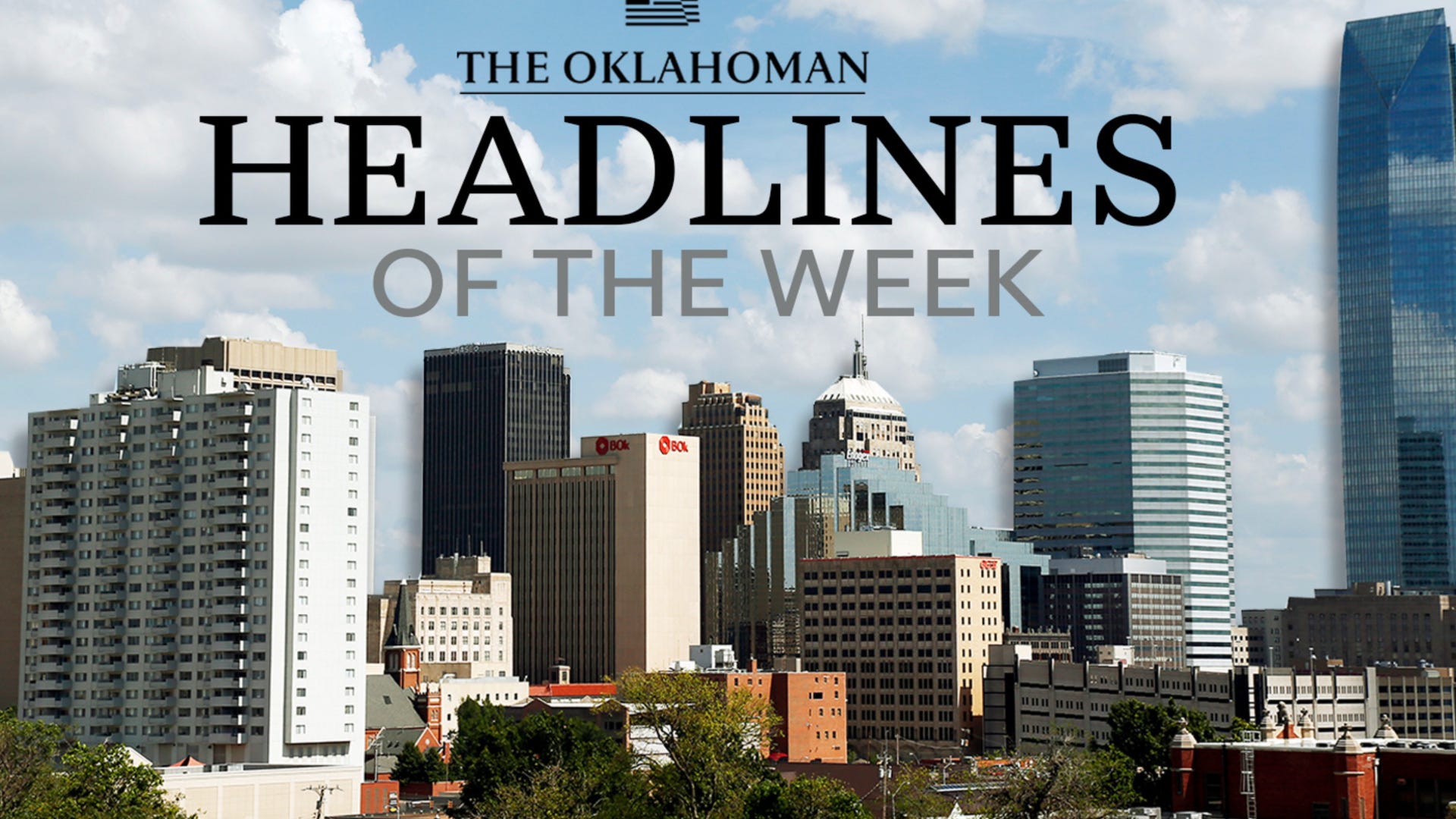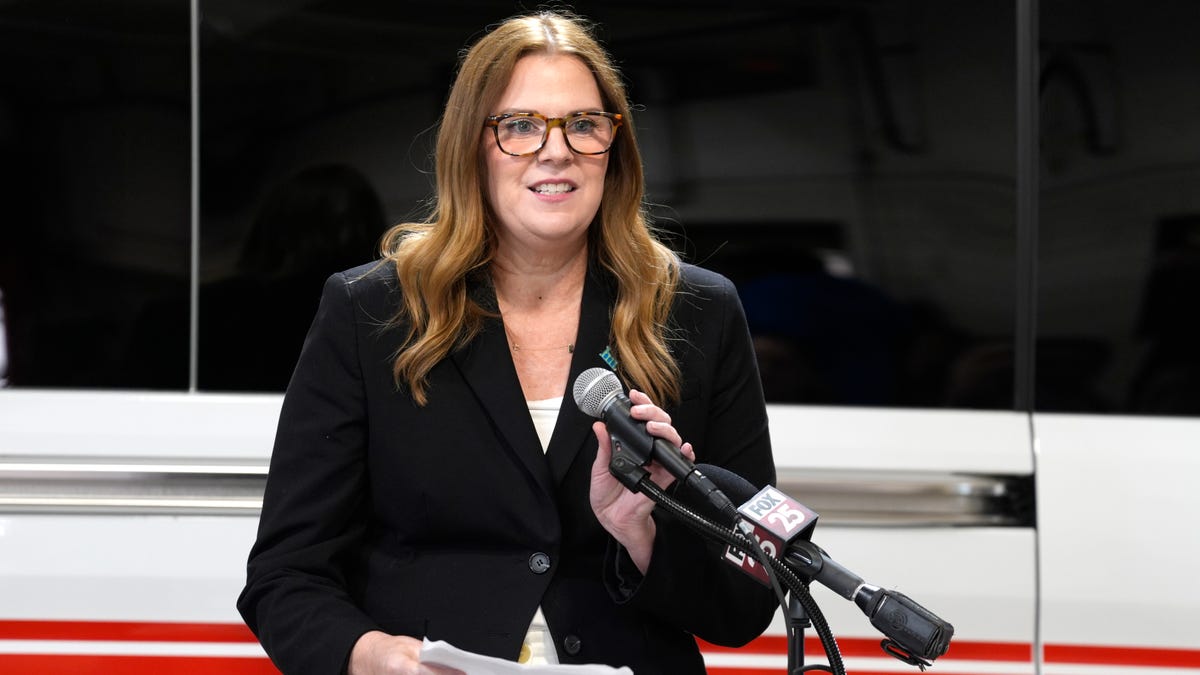
Tremane Wood, OU football’s stadium, and other top Oklahoma headlines
Got a minute? Catch up on the top news of the week.
Oklahoma City faces a lack of intensive services for people with serious mental health illnesses, inadequate support for minors and an overreliance on emergency rooms to treat mental health crises, according to a newly-released study from a nonprofit, non-partisan policy organization.
The Healthy Minds Policy Initiative issued the study Thursday, Nov. 20. The study found that in the parts of Oklahoma City that face the highest risks for mental health problems, including the south side and western region, there’s a severe lack of access to safety-net mental health providers.
The in-depth assessment of the city’s needs around mental health and substance use was funded by the Inasmuch Foundation and the City of Oklahoma City. The Healthy Minds Policy Institute identified several key areas the city can concentrate on in future strategic planning and behavioral health investment.
“Oklahoma City is doing something remarkable here,” said Jessica Hawkins, Healthy Minds Policy Initiative’s director of community initiatives and facilitator of the OKC mental health leadership team. “It’s impressive and rare to see a city take ownership of the issues of mental health and substance use in the way Oklahoma City is. This is a long-term investment in the people of Oklahoma City, and I’m optimistic about how this work is going to pay off in the years ahead.”
Healthy Minds laid out five priority areas for community leaders to strategize around to address Oklahoma City’s mental health issues: removing structural and systemic barriers to care, diverting residents to appropriate care settings, addressing missing community-based intensive services, investing in children and meeting residents’ basic needs.
The organization blamed systemic barriers on keeping residents from care, such inadequate insurance, an overstretched workforce and a lack of coordination among providers.
Behavioral health challenges among Oklahoma City residents
The study spells out the human and financial impacts of mental health issues in Oklahoma City. It found 114,000 adults in the city live with a mental illness.
More than 57,000 residents ages 12 and older have a substance use disorder, according to the study. Roughly 5% of children in Oklahoma City meet criteria for a substance use disorder but most do not receive needed treatment.
The study also found a sharp increase in drug overdose deaths, from 106 in 2019 to 292 in 2023. It’s estimated that more than 5,800 people in Oklahoma City experienced a non-fatal overdose, with nearly 1,000 requiring hospitalization.
Non-fatal overdoses were estimated to have cost $64 million in hospitalization care in 2023, a 34% increase since 2019.
At 16 suicides for every 100,000 residents, Oklahoma City’s suicide rate is just above Oklahoma County, which is at 15 per 100,000, and below the state’s overall rate at 22, according to the study.
In the past year, 3,522 adults in Oklahoma City attempted suicide, and about 7,769 reported making a suicide plan. Of adults, 21,200 experience serious thoughts of suicide, and 123,300 experience depression.
For every suicide death, the study found there are about 10 ER visits for self-harm, adding up to about 980 visits in Oklahoma City in 2024.
About 25,200 children in Oklahoma City experience persistent sadness, according to the study, and about 8,400 have experienced a major depressive episode.
More than 3,400 middle and high school students surveyed reported moderate to high psychological distress. Fifteen percent of adolescent students surveyed have experienced a major depressive episode, and nearly 5,005 students experience depressive symptoms.
Among 12th graders, 27.4% reported ever using alcohol, and 26.2% reported marijuana use. Non-fatal overdose episodes have increased among Oklahoma County youth under age 15 about 147% from 2019 to 2023, according to the study.
The study links easy access to alcohol and marijuana to higher rates of use, earlier initiation among minors and increased harms, such as binge drinking and impaired driving. In Oklahoma City, 38% of schools and 51% parks are less than two-thirds of a mile to an alcohol outlet.
The study found that in 2023, 42% of minors who attempted to purchase alcohol were successful.
Of kids age 12-17 in Oklahoma City, 7,000 have serious thoughts of suicide, according to the study. About 3,400 made a suicide plan, and about 1,800 attempt suicide, more than 3% of the age group.
Emergency room discharges related to suicidality among minors in Oklahoma County have increased about 54% between 2020-2023.
Mental health-related ER visits in Oklahoma City dipped during the COVID-19 pandemic, according to the study, but surged in 2022. The share of the Oklahoma Department of Mental Health and Substance Abuse Services’ clients visiting the ER rose from 10% in 2019 to 15% in 2024.
“While the prevalence of mental health challenges among youth in Oklahoma City was surprising, it is encouraging that Healthy Minds has assembled community and youth-based program leaders, mental health service providers, public school administrators, and public safety officials to work together to remove barriers to programs that can connect young people to the resources and services that will help them achieve better outcomes,” Andrea Grayson, implementation program manager at the City of Oklahoma City, said in a news release.
What’s driving mental health and substance use outcomes in Oklahoma City?
Trisha Finnegan, president and CEO of the Oklahoma City Community Foundation, said in a news release that so much is possible when communities work together to assess needs and align around a vision.
“Through data and partnership, we are forming a clear path for how we can all help meaningfully address these issues, strengthen resources and provide lasting support for our neighbors moving forward,” she said.
The study used a metric called the Social Vulnerability Index to identify parts of Oklahoma City that should be considered at higher risk for mental health and substance use concerns. The index was developed by the Centers for Disease Control and Prevention and is used to identify communities more likely to experience negative outcomes following crises through factors like socioeconomic status, household characteristics, housing type and transportation.
Fifteen percent of Oklahoma City residents live below the federal poverty line, compared to 11% nationally, the study shows. Poverty rates are higher among Black residents at 27%, Hispanic residents at 22% and people with less than a high school education at 28%.
The western part of Oklahoma City just north of Interstate 40 has the highest vulnerability score in the state. The next highest scores are on the south side of OKC.
The study found that nearly 87% of Oklahoma City’s workforce took a private vehicle to work in 2018-2023, posing problems for residents who can’t afford to maintain a car in the car-centric city. In the city, 7% of all households do not have a vehicle.
The study estimated that 21,000 people have missed doctor’s appointments because of transportation barriers.
Schools, service providers and community organizations interviewed for the study said patients who move between different settings and providers encounter frequent gaps in Oklahoma City’s mental health and substance use service landscape. The study identified competition for funding as a significant barrier to effective collaboration.
